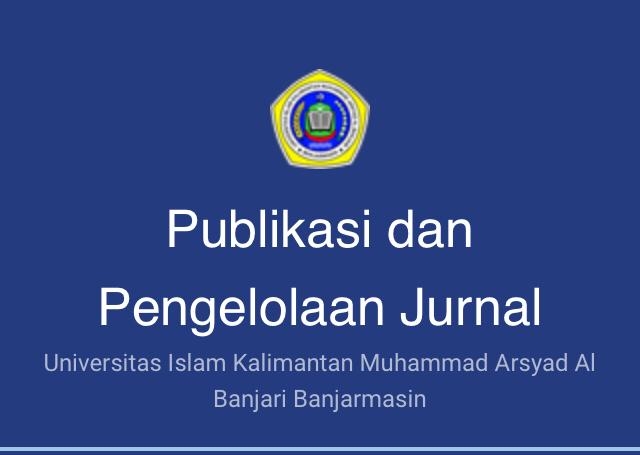PENGARUH CITRA MEREK DAN KEPERCAYAAN KONSUMEN TERHADAP MINAT PEMBELIAN SECARA ONLINE
(1) Universitas Islam Kalimantan (UNISKA) MAB Banjarmasin
(*) Corresponding Author
Sari
Kata Kunci
Teks Lengkap:
PDFReferensi
Adi. 2016. Are you making these online survey mistakes. diakses September 2016: https://www.questionpro.com/blog/6-problems-with-online-surveys-and-how-to-avoid-them/
Aghekyan, Marine. 2009. The role of product brand image and online store image on Perceived risks and online purchase intentions. Alabama: Auburn Universities
Aghekyan, Fosrthye, & Kwon. 2012. The role of product brand image and online store image on perceived risks and online purchase intentions for apparel. Journal of Retailing and Consumer Services 19 (2012) 325–331
Arista, Elisabeth D. 2011. Analisis pengaruh iklan, brand trust dan brand image terhadap minat beli konsumen telkom speedy di kota semarang. Diponegoro University
Chaudhuri, A. And Holbrook, H.B. 2001. The chain of effect from brand trust and brand affect to brand performance: the role of branf loyalty. Journal of Marketing, Vol. 65 No. 2.
Chin, W. W. 1998. Issues and opinion on structural equation modeling (Editorial). MIS Quarterly, 1. Diunduh dari: http://search.ebscohost.com/login.aspx?direct=true&db=buh&AN=345479&site=ehost-live
Ferrell and hatrline. 2011. Marketing Strategy. Ohio, mason: South-Western Cengage Learning
Gefen, D., & Straub, D. W. (2004). Consumer trust in B2 C e-commerce and the importance of social presence: Experiments in e-products and e-services. Omega, 32(6), 407–424. http://dx.doi.org/10.1016/j.omega.2004.01.006
Keller, K. L. (1993). Conceptualizing, measuring, and managing customer-based brand equity. Journal of Marketing, 57(1), 1-22.
Kotler et al., 1999. Principles of marketing. New York: Prentice Hall
Kotler, Philip dan Keller, Kevin Lane. 2005. Manajemen Pemasaran, Indeks, Jakarta
Latan, Hengki. 2014. GESCA: Teori, Konsep, dan Aplikasi. Bandung: Satu Nusa
Lau, G.T., and Lee, S.H. 2000. Consumer Trust in Brand and the Link to Brand Loyalty. Journal of Market Focused Management. 4, pp. 341-370
Lin, K. Y., & Lu, H. P. 2011. Why people use social networking sites: an empirical study integrating network externalities and motivation theory. Computers in Human Behavior, 27(3), 1152–1161.
Ming-Hsien, Y., Chandlrees, N., Binshan, L., & Hung-Yi, C. (2009). The effect of perceived ethical performance of shopping websites on consumer trust. Journal of Computer Information Systems, 50(1), 15–24
Mutz, D. C. 2005. Social trust and e-commerce: Experimental evidence for the effects of social trust on individuals’ economic behavior. Public Opinion Quarterly, 69(3), 393–416. http://dx.doi.org/10.1093/poq/nfi029
Prabowo, Riefky. 2014. Analisis pengaruh iklan, brand trust dan brand imageterhadap minat beli konsumen mastin ekstrak kulit manggis di kota Malang. University of Brawijaya malang
Rotter, J.B., 1971. Generalized expectancies for interpersonal trust. American psychologist, 26(5), p.443.
Semuel, Hatane & Lianto, Adi S. 2014. Analisis ewom, brand image, brand trust dan minat beli produk smartphone di Surabaya. Jurnal manajemen pemasaran, vol. 8, no. 2, October 2014
Statista. 2015. Leading social networks worldwide as of March 2015, ranked by number of active users (in millions). Statista.com, retrieved on 16/3/2015 from [http://www.statista.com/statistics/272014/global-social-networks-ranked-by-number-of-users/]
Tenenhaus M. 2008. Component-based Structural Equation Modelling, [Online], http://www.hec.fr/heccontent/download/4797/115324/version/2/file/CR887TENENHAUS.pdf, 2008.
DOI: http://dx.doi.org/10.31602/al-kalam.v4i2.972
Refbacks
- Saat ini tidak ada refbacks.

Al Kalam : Jurnal Komunikasi, Bisnis, dan Manajemen by https://ojs.uniska-bjm.ac.id/index.php/alkalam/index adalah ciptaan disebarluaskan di bawah Lisensi Creative Commons Atribusi-BerbagiSerupa 4.0 Internasional.









